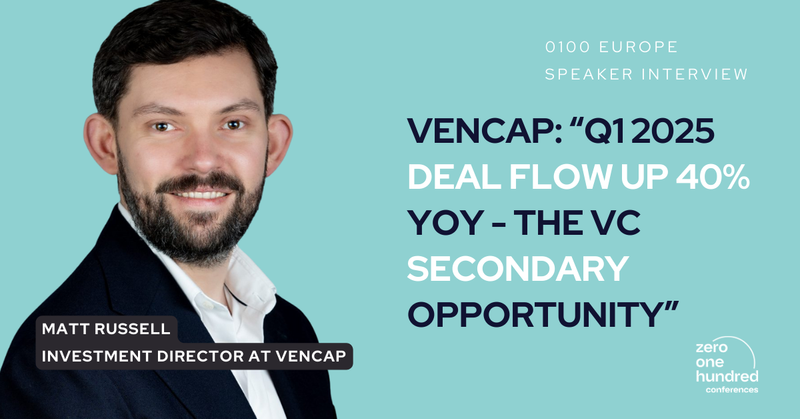With deal flow up 40% year-on-year in Q1 2025, the venture capital secondary market is seeing significant growth and rising interest from investors. In this interview, Matt Russell, Investment Director at VenCap, outlines how the firm is capitalizing on this trend. He explains VenCap’s disciplined strategy for accessing top-tier VC-backed companies, the advantages of secondaries over primaries, and why the current market environment presents compelling opportunities for those with the right capital and insight.

Could you start by introducing VenCap and your investment strategy?
VenCap was founded in 1987 and is focused purely on investing in VC funds. We have invested roughly $3BN into around 500 individual funds through primaries and secondaries.
Unlike PE, this is a power law asset class. The majority of VC-backed companies fail to return capital and the top-1% of companies generate the majority of returns from the asset class. Only by accessing these top-1% companies can you generate the outstanding returns that VC can offer.
On the primary side we concentrate our capital with the firms that have proven the ability to consistently access these top-1% companies with meaningful ownership.
Our secondary strategy allows us to gain further exposure to these top-1% companies at attractive pricing vs. FMV.
What are VC secondaries?
VC secondaries provide the opportunity to gain exposure to VC-backed companies through secondary transactions. These secondary transactions can take the form of buying stakes in VC funds in the secondary market, participating in GP-led deals or buying direct positions in companies.
We focus on the first two.
Many VC funds themselves look to pursue direct secondaries in high conviction companies, we would happily discuss supporting them in doing so by providing additional capital.
What are the benefits of VC secondaries?
VC secondaries provide the opportunity to gain immediate exposure to mature, VC-backed companies at attractive pricing vs. FMV. By the time primary investors typically look to generate secondary liquidity, many of these companies will be generating substantial revenues (often in the hundreds of millions or even billions).
Secondaries provide the opportunity to enter at attractive pricing vs. FMV and the cash flow duration is shorter.
How large is the VC secondary market?
In terms of annual secondary volume for fund interests and GP-leds, the VC & Growth segment was around $16BN in 2024 (roughly 10% of the overall secondary market).
The direct secondary market is hard to measure precisely, but just looking at the size of various company-led secondary tenders we have seen it is substantially larger than $16BN. It is equivalent to the sponsor-to-sponsor secondary market in PE.
What drives deal flow for VC funds & GP-leds?
It is a function of the primary asset base and general secondary adoption / need for liquidity. There is around $3TN of unrealised value in VC funds globally and 0.5% trades in the secondary market annually. It is much more nascent than PE which has a much more mature secondary market. There is around $4TN of value in PE funds globally and the secondary turnover rate is close to 3%. Clearly, the VC secondary opportunity has a lot of runway.
What is the typical discount to NAV for VC secondaries?
You will notice I refer to FMV rather than NAV, that is critical.
Ultimately, you are buying exposure to companies. You cash-on-cash return will be a function of the quality of the companies and what you paid for them. We see huge variation in fund valuation marks for the same company so you need to understand exactly what you are buying. Often a smaller NAV discount on a conservative fund is a better intrinsic value than a large discount on an aggressive fund.
What is your outlook for 2025?
Looking at Q1 2025, our deal flow is up 40% YoY. Given the increased secondary adoption and need for liquidity, I can only see that only accelerating.
The key constraint on our side is capital availability, we do not have enough dry powder to execute on all of the attractive deals we see right now.

